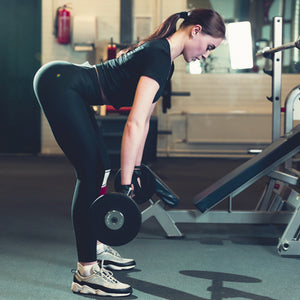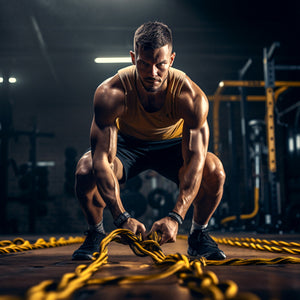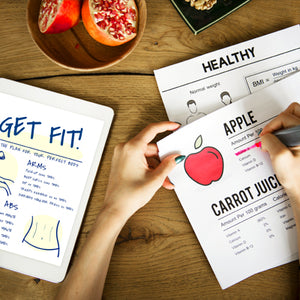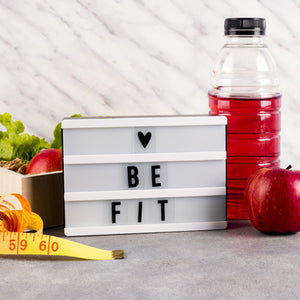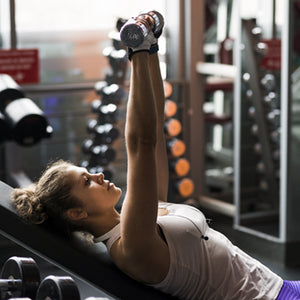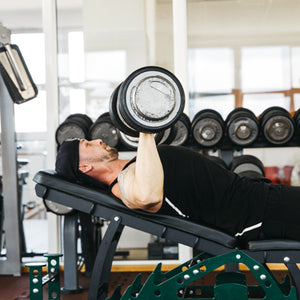
6 Compound Exercises You Should Never Swap Out
It is common knowledge in the strength and conditioning world that variables of training must constantly change to ensure continued progress. One of these important variables is exercise selection.
And although I think exercises should be switched every four to six weeks, athletes should stick to variations of a handful of lifts. These exercises, which are the foundation of a solid training program, are as follows.
6 Compound Exercises You MUST Stick With
1. Barbell Squats
There should be no surprise that squats are number one on the list.
Squatting is a full body exercise that packs on loads of muscle and strength to the lower body, increases knee health if done correctly, has a large metabolic demand (just a fancy way of saying that squats burn a shit ton of calories), and has a massive carryover into everyday life.
If you can squat through a full range of motion with a braced neutral spine, stability in the hips, a high ankle arch, and the knees tracking outward, I would venture to guess you can emulate that form when you squat to pick something up at home, jump, run, etc.
Squatting is also a great diagnostic tool to detect mobility and flexibility limitations that can lead to physical ailments later in life. Whether you choose to squat high bar, low bar, with a wide stance, or on a box, just SQUAT!
Common Squat Variations: Barbell Back Squats, Low Box Squats, High Box Squats, Front Squats, Bulgarian Split Squats, Safety Bar Squats.
2. Barbell/Trap Bar Deadlifts
If the squat is Batman, then the deadlift is Batman's loyal sidekick, Robin.
I have yet to come across a lift that stimulates the amount of posterior chain development and has as many corrective benefits as the deadlift. Since the posterior chain is crucial for strength and physique development, enhancing athletic performance and injury prevention, it would be wise to pull and pull often.
Many people neglect the deadlift because of the demand it places on the body and for fear of lower back injury. I will admit that no lift (even squats) will leave you more fatigued than a max effort pull, but developing superhuman levels of strength and size is not an easy task.
In regards to injuring the lower back, problems only arise when the deadlift is performed incorrectly (or if you are deadlifting 800 + pounds. BLEEP happens).
Develop the motor control, mobility and flexibility to deadlift properly before you start loading a ton of weight to the bar and you should not have many problems. Incorporate some heavy pulls into your program and take note of the progress you make in all areas of your training.
Common Deadlift Variations: Conventional Deadlift, Sumo Deadlift, Trap Bar Deadlift, Romanian Deadlift, Rack Pulls.
3. The Bench Press
The bench press is the king of the pack when it comes to increasing the strength and mass of the chest and triceps. Some coaches argue that the lift does not carry over into sports and is therefore not needed in many athletic performance programs. I disagree.
In order for heavy weight to move off of your chest, you must be able to efficiently transmit force from the ground, through your entire body and into the bar positioned in your hands. It is a trait that would definitely enhance athletic performance on the playing field.
Let's also not forget that the bench press teaches you to stabilize your shoulders into a good position, which is extremely important when the shoulders are one of the most mobile, and, therefore, injury prone joints in the body.
If you want to increase shoulder health and build the chest of a gorilla, bench!
Common Bench Press Variations: Flat Bench Press, Incline Bench Press, Decline Bench Press, Close Grip Bench Press, Board Press, Floor Press, Dumbbell Flat/Incline/Decline Press.
4. The Overhead Press
Although the bench press is a more popular lift, the overhead press is the king of all upper body exercises. Not only does it build massive shoulders, bulging triceps, and is probably the best lift for developing total upper body strength, it is one of the most functional movement patterns you can perform.
The overhead press does require a large amount of shoulder mobility and flexibility, and for some people, the lift will cause more harm than good. If you have the ability to perform the lift without any problems, make it a pillar of your upper body training and it will take your strength and physique to the next level.
Common Overhead Press Variations: Barbell Overhead Press, Dumbbell Overhead Press, Seated Military Press, Seated Dumbbell Shoulder Press.
5. Pull-ups/Chin-ups
You know those lifts that used to have kids skipping fifth grade P.E. class? Well, they don't get any easier when you get older, but they are still one of the best movements an athlete can perform.
Pull-ups throw slabs of muscle on to the upper back, lats, and posterior shoulder girdle, while simultaneously counteracting pressing movements and maintaining shoulder health. Their best attribute, they can be done anywhere.
From the gym, to a tree in your front yard, there is always somewhere to train your back. So get to work.
Common Pull-up/Chin-up Variations: Pull-ups, Chin-ups, Wide Grip Pull-ups, Single Arm Pull-ups.
6. Barbell Rows
The final lift on the list is barbell rows. Where pull-ups provide the back with a vertical stimulus, barbell rows attack the muscles horizontally and with a greater amount of intensity.
Much more weight can be added to a barbell than a belt clamped around your waist, and progressive overload is the simplest way to stimulate increases in size and strength. Not only that, but a weak upper back is usually a limiting factor in other main lifts, so incorporating barbell rows will go a long way in fixing the imbalance and boosting performance.
If your back is a weak point and you are hitting plateaus in other areas of your training, try incorporating a 2:1 ratio of pulling to pressing movements and start hammering some rows.
Common Row Variations: Barbell Rows, Reverse Grip Barbell Rows, Dumbbell Rows, Meadows Rows, Chest Supported Rows, Kroc Rows, Cable Rows.
Conclusion
So there are the lifts that I consider the pillars of a good training program. People are always searching for the next best exercise or high tech machine that will give them the fastest results. The simple fact is that multi-joint compound movements will lead to the greatest adaptions in strength, size, power, speed, and fat loss.If it isn't broken, don't fix it.
If the best athletes in the world prioritized a barbell and weight plates to reach the high levels of performance and physique development, it would be wise for us to do the same. Keep things simple, focus on lifts that give you the most bang for your buck and work your ass off. There will be nowhere to go but up!

